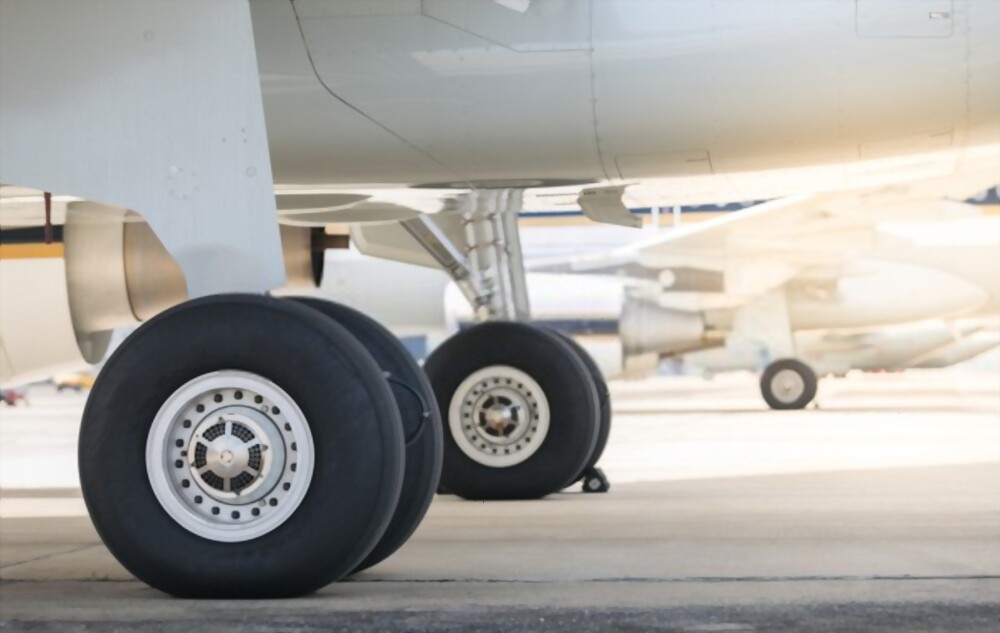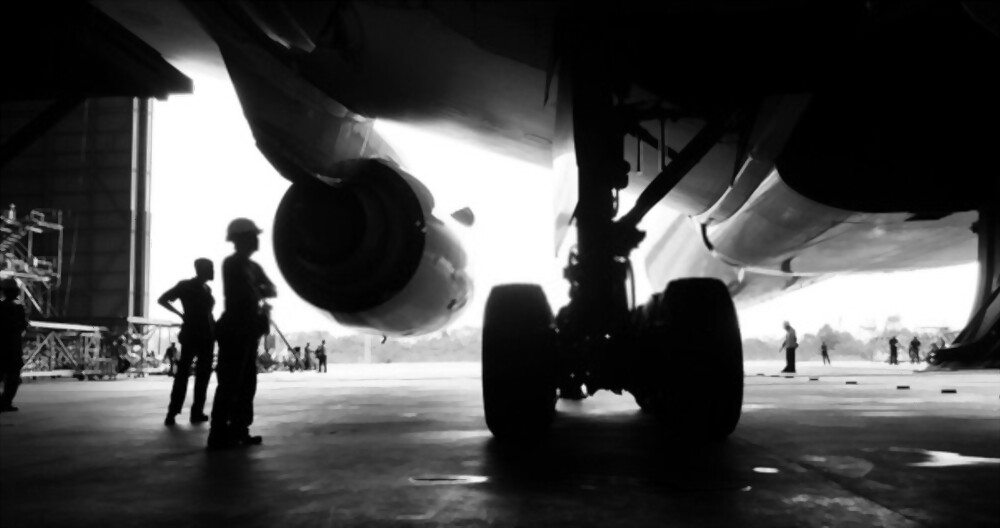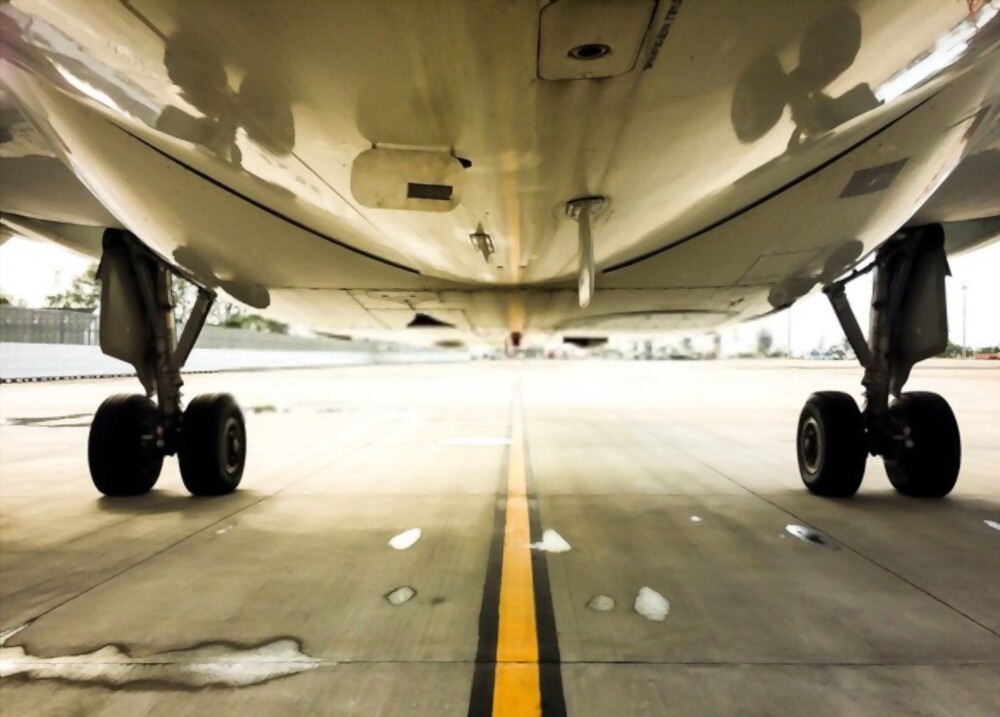Airplane tire sizes are a critical component of aircraft design and operation. Proper tire size selection is essential for ensuring the safe and efficient operation of an aircraft. The wrong tire size can lead to increased wear and tear on the tire, reduced fuel efficiency, and even accidents.
Airplane tire sizes are designed to match the specific requirements of each aircraft model. The size and weight of an aircraft, as well as the type of landing gear system used, are all taken into account when determining the appropriate tire size. Choosing the correct tire size ensures that the aircraft can handle the stresses of takeoff and landing, as well as the weight of the aircraft during flight.
Components Of An Airplane Tire
An airplane tire consists of several components, including the tread, sidewall, beads, ply, and cord body. The tread is part of the tire that makes contact with the ground, while the sidewall provides structural support. The beads keep the tire in place on the rim, and the ply and cord body provides additional strength and flexibility. Each of these components plays a critical role in the safe and efficient operation of an airplane tire.
The Most Commonly Used Airplane Tire Sizes

Airplane tire sizes vary depending on the aircraft model and its requirements. However, some tire sizes are more commonly used than others. The most common airplane tire sizes include:
- 29×11.0-10: This tire size is commonly used for small, single-engine aircraft with tricycle landing gear.
- 31×13.0-15: This tire size is commonly used for light twin-engine aircraft with tricycle landing gear.
- 22×6.6-10: This tire size is commonly used for small, single-engine aircraft with conventional landing gear.
It’s important to note that these sizes may not be suitable for all aircraft and should be selected based on the factors discussed above.
How Airplane Tire Sizes Are Measured
Airplane tire sizes are measured using a standard system that includes three numbers separated by a forward slash. The first number indicates the tire width in millimeters, the second number represents the aspect ratio, which is the height of the tire sidewall as a percentage of the width, and the third number is the tire’s diameter in inches. For example, a tire marked as “305/70R19.5” would have a width of 305 millimeters, an aspect ratio of 70%, and a diameter of 19.5 inches
Airplane Tire Size Indicator
An airplane tire size indicator is a code that provides information about the tire’s size, type, and other specifications. The indicator typically consists of a series of letters and numbers, such as 29×11.0-10, where the first number (29) indicates the tire diameter in inches, the second number (11.0) indicates the tire width in inches, and the third number (10) indicates the tire rim diameter in inches.

The letters in the code may also indicate the tire type and load rating, such as P for passenger or C for commercial, and the load rating code. The tire size indicator is an important reference for selecting the appropriate tire for an aircraft and ensuring safe and efficient operation.
Factors That Determine The Appropriate Tire Size For An Aircraft
- Aircraft weight: The weight of the aircraft is a significant factor in determining the appropriate tire size. The heavier the aircraft, the larger the tire size required.
- Type of landing gear system: The type of landing gear system used on the aircraft affects the tire size selection. For example, a tricycle landing gear system requires different tire sizes than a tailwheel landing gear system.
- Maximum takeoff weight: The maximum takeoff weight of the aircraft is another critical factor in determining the appropriate tire size. This weight includes the weight of the aircraft, fuel, passengers, and cargo.
- Maximum landing weight: The maximum landing weight of the aircraft is also taken into account when selecting the appropriate tire size. This weight includes the weight of the aircraft, fuel, passengers, cargo, and any additional weight added during the flight.
- Runway conditions: The condition of the runway, including its length and surface type, is also considered when selecting the appropriate tire size. Shorter runways or those with rough surfaces may require larger tires to ensure safe takeoff and landing.
Overall, the appropriate tire size for an aircraft is determined by a combination of these factors and must be carefully selected to ensure the safe and efficient operation of the aircraft.
Selection of Airplane Tire Sizes
Choosing the right tire size for an aircraft requires careful consideration of several factors, including the aircraft’s weight, landing gear system, maximum takeoff weight, maximum landing weight, and runway conditions. Here are the steps to choose the right tire size for an aircraft:
- Consult the aircraft manufacturer’s specifications and recommendations for tire size selection.
- Determine the weight of the aircraft, including fuel, passengers, and cargo.
- Identify the type of landing gear system used on the aircraft.
- Determine the maximum takeoff and landing weights of the aircraft.
- Consider the condition of the runway, including its length and surface type.
- Consult regulatory requirements and guidelines for tire size selection.
- Consider the cost and availability of different tire sizes.
- Choose the appropriate tire size that meets all of the above criteria and ensures the safe and efficient operation of the aircraft.
It is essential to follow manufacturer recommendations and regulatory requirements when selecting and maintaining airplane tires.
Future Of Airplane Tire Technology

The future of airplane tire technology is promising, with ongoing research and development aimed at improving tire performance, safety, and efficiency. Some of the advancements being explored include the use of new materials, such as carbon fiber and composites, to reduce tire weight and increase durability.
FAQs
How often should airplane tires be replaced?
Airplane tires should be replaced at regular intervals or when they reach their maximum service life, which varies depending on the tire type and usage. In general, commercial aircraft tires are replaced after 150 to 300 landings or every six years, whichever comes first. However, it’s important to follow manufacturer recommendations and regulatory requirements for tire maintenance and replacement to ensure safe and efficient operation.
Are there any regulations governing airplane tire sizes?
Yes, there are regulations governing airplane tire sizes. The FAA and other regulatory bodies provide guidelines and requirements for tire size selection and maintenance to ensure the safe and efficient operation of aircraft.
How do weather conditions affect airplane tire performance?
Weather conditions, such as temperature, precipitation, and wind, can affect airplane tire performance by affecting tire pressure, traction, and wear. Extreme temperatures and weather conditions can also increase the risk of tire damage and failure.
What is the expected lifespan of an airplane tire?
The expected lifespan of an airplane tire varies depending on the type of tire and its usage. Commercial aircraft tires typically last between 150 to 300 landings or every six years, whichever comes first.